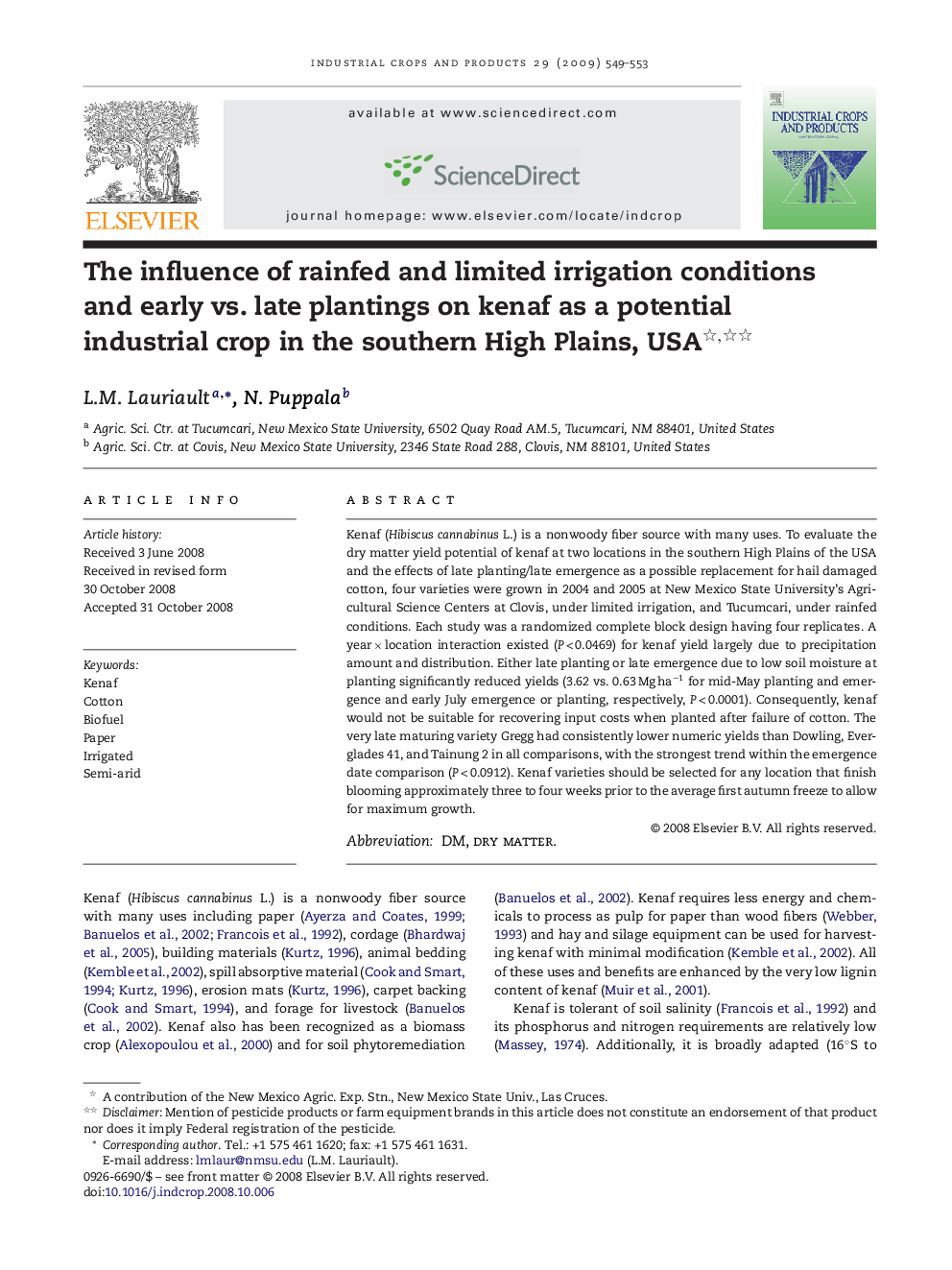| Article ID | Journal | Published Year | Pages | File Type |
|---|---|---|---|---|
| 4514991 | Industrial Crops and Products | 2009 | 5 Pages |
Kenaf (Hibiscus cannabinus L.) is a nonwoody fiber source with many uses. To evaluate the dry matter yield potential of kenaf at two locations in the southern High Plains of the USA and the effects of late planting/late emergence as a possible replacement for hail damaged cotton, four varieties were grown in 2004 and 2005 at New Mexico State University's Agricultural Science Centers at Clovis, under limited irrigation, and Tucumcari, under rainfed conditions. Each study was a randomized complete block design having four replicates. A year × location interaction existed (P < 0.0469) for kenaf yield largely due to precipitation amount and distribution. Either late planting or late emergence due to low soil moisture at planting significantly reduced yields (3.62 vs. 0.63 Mg ha−1 for mid-May planting and emergence and early July emergence or planting, respectively, P < 0.0001). Consequently, kenaf would not be suitable for recovering input costs when planted after failure of cotton. The very late maturing variety Gregg had consistently lower numeric yields than Dowling, Everglades 41, and Tainung 2 in all comparisons, with the strongest trend within the emergence date comparison (P < 0.0912). Kenaf varieties should be selected for any location that finish blooming approximately three to four weeks prior to the average first autumn freeze to allow for maximum growth.
